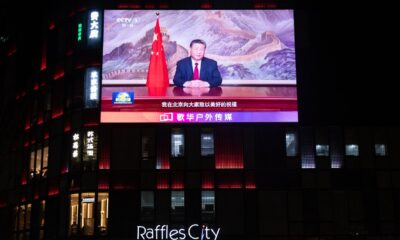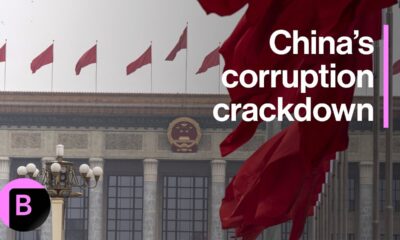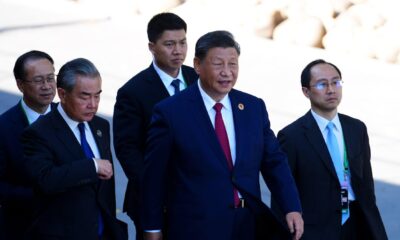China
Confusion as State-Owned Insurer Aims for Second-Biggest IPO After Facebook
A $6 billion listing of a giant Chinese state-owned insurer is taking on new twists and turns as bankers gear up for an increasingly taxing deal.

A $6 billion listing of a giant Chinese state-owned insurer is taking on new twists and turns as bankers gear up for an increasingly taxing deal.
Measured on a purchasing power parity (PPP) basis that adjusts for price differences, China in 2009 stood as the second-largest economy in the world after the US, although in per capita terms the country is still lower middle-income.
In 2009, China announced that by 2020 it would reduce carbon intensity 40% from 2005 levels.
The country’s per capita income was at $6,567 (IMF, 98th) in 2009.
The restructuring of the economy and resulting efficiency gains have contributed to a more than tenfold increase in GDP since 1978.
Technology, labor productivity, and incomes have advanced much more rapidly in industry than in agriculture.
China has acquired some highly sophisticated production facilities through trade and also has built a number of advanced engineering plants capable of manufacturing an increasing range of sophisticated equipment, including nuclear weapons and satellites, but most of its industrial output still comes from relatively ill-equipped factories.
China’s ongoing economic transformation has had a profound impact not only on China but on the world.
The growth in both outbound investment from, and inbound investment to, China reflects the nation’s rising economic power and attractiveness as an investment destination.
Last year was the eighth consecutive year that the nation’s ODI had grown.
China is expected to have 200 million cars on the road by 2020, increasing pressure on energy security and the environment, government officials said yesterday.
Although China is still a developing country with a relatively low per capita income, it has experienced tremendous economic growth since the late 1970s.
Despite initial gains in farmers’ incomes in the early 1980s, taxes and fees have increasingly made farming an unprofitable occupation, and because the state owns all land farmers have at times been easily evicted when croplands are sought by developers.
Except for the oasis farming in Xinjiang and Qinghai, some irrigated areas in Inner Mongolia and Gansu, and sheltered valleys in Tibet, agricultural production is restricted to the east.
Livestock raising on a large scale is confined to the border regions and provinces in the north and west; it is mainly of the nomadic pastoral type.
Oil fields discovered in the 1960s and after made China a net exporter, and by the early 1990s, China was the world’s fifth-ranked oil producer.
China is among the world’s four top producers of antimony, magnesium, tin, tungsten, and zinc, and ranks second (after the United States) in the production of salt, sixth in gold, and eighth in lead ore.
In the 1990s a program of share-holding and greater market orientation went into effect; however, state enterprises continue to dominate many key industries in China’s socialist market economy.
Brick, tile, cement, and food-processing plants are found in almost every province.
More:
Confusion as State-Owned Insurer Aims for Second-Biggest IPO After Facebook
China
Cross-Border Data Transfers: New Draft Guidelines Clarify Certification for Personal Information Protection

China’s draft measures for personal information protection in cross-border data transfers clarify certification procedures, eligibility, and requirements. Released by the Cyberspace Administration, they aim to enhance data governance and privacy, ensuring compliance and safeguarding personal information in international exchanges.
China’s new draft measures provide clarity on the certification process for personal information protection in cross-border data transfers (CBDT). Aimed at enhancing data governance, safeguarding privacy, and ensuring regulatory compliance, the draft measures outline eligibility criteria for applying the certification mechanism, specify the requirements, and detail the certification procedures.
On January 3, 2025, the Cyberspace Administration of China (CAC) issued a draft document titled Measures for the Certification of Personal Information Protection for Cross-Border Data Transfers (hereinafter, draft measures) for public consultation. The draft measures, comprising 20 detailed articles, outline a comprehensive framework for certifying the security and compliance of personal data transfers beyond China’s borders.
With the feedback deadline set for February 3, 2025, the draft measures represent a crucial step in China’s broader strategy to strengthen data governance, ensure cybersecurity, and address global concerns over the safety of cross-border information flows.
Article 3 of the draft measures defines “PI protection certification” in cross-border data transfers as the formal evaluation process carried out by bodies authorized by the State Administration for Market Regulation (SAMR).
These certification bodies are responsible for assessing the compliance of personal information processors with the requirements of secure cross-border data transfers. The certification ensures that processors—whether domestic or foreign—adhere to the stringent criteria set out in the regulations, thereby protecting individuals’ personal information while enabling international data exchanges. Certified entities must demonstrate their capacity to manage cross-border data transfers in compliance with the standards laid out by the CAC and SAMR.
The certification process not only verifies compliance but also serves as an assurance to the public and regulatory authorities that the certified processors meet the required data protection measures.
Moreover, the scope of “cross-border data transfers” encompasses several scenarios where personal information moves across national boundaries. These include:
| This article was first published by China Briefing , which is produced by Dezan Shira & Associates. The firm assists foreign investors throughout Asia from offices across the world, including in in China, Hong Kong, Vietnam, Singapore, and India . Readers may write to info@dezshira.com for more support. |
Read the rest of the original article.
China
China’s economy took centre stage in Xi’s new year address, spinning slow growth as a ‘remarkable’ achievement
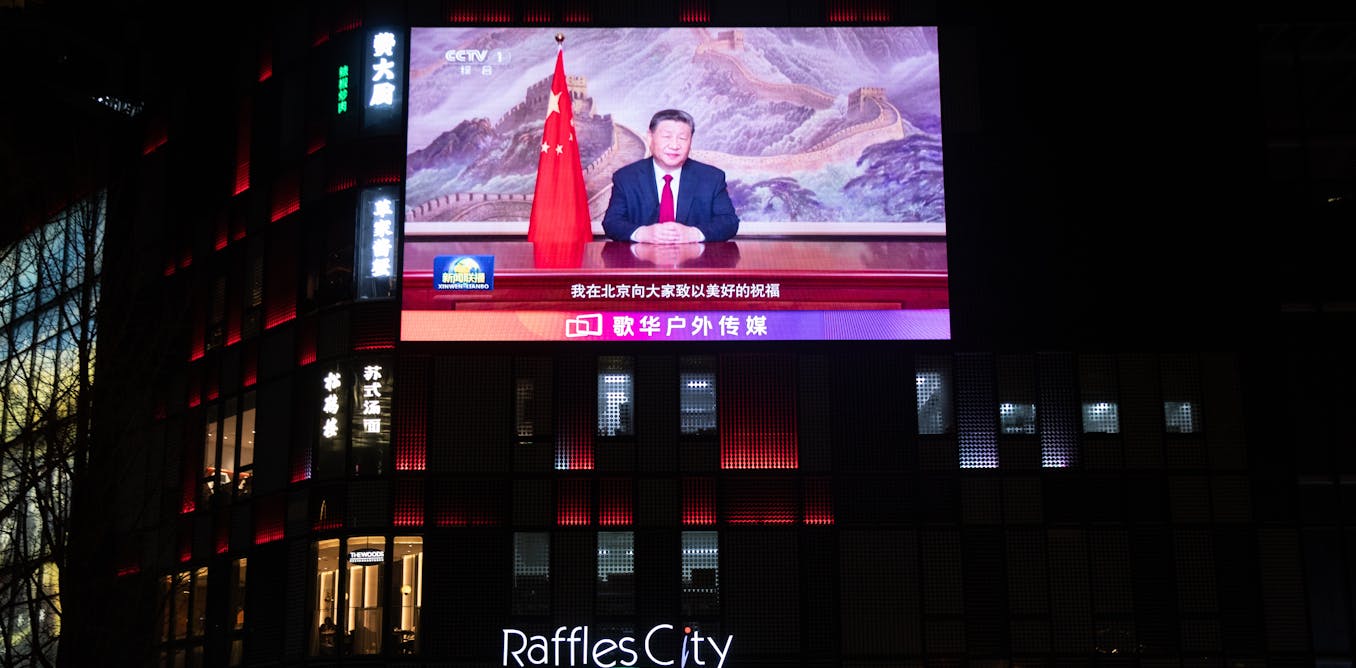
Xi Jinping’s New Year address emphasized China’s economic growth and nationalism, while attempting to downplay slowing GDP and high youth unemployment, reflecting the Chinese Communist Party’s increasing insecurity and media control.
Chinese president Xi Jinping delivered his annual televised new year address on December 31, and commentators have been quick to share their interpretation. Some have emphasised Xi’s passing reference to Chinese reunification as a threat against Taiwan. Others have focused on Xi’s comments about China’s economy, framing them as a fearful reaction to Donald Trump’s reelection as US president.
However, these accounts miss the bigger picture. Xi’s new year address speaks to the increasing insecurity of the Chinese Communist party’s (CCP) grip on power. This insecurity is evident in how Xi’s comments, supported by the party’s control of Chinese media, attempted to gaslight the Chinese people.
The mainstay of Xi’s address concerned the economic success of China. He stressed that the Chinese economy is thriving, and explained that China’s total GDP is soon expected to surpass 130 trillion yuan (£14.3 trillion). This equates to a 4.9% increase in GDP over the course of the last 12 months.
Reports on Xi’s address in the Chinese media have taken this a step further. China Daily, the official CCP-owned newspaper often used to communicate the party’s position to the Chinese people, praised Xi’s “heartening speech” and stressed the impressiveness of China’s “remarkable” growth rate. An article published on January 1 explained that other developed economies struggled to average rates of 1.5%.
Omitted from the positive economic commentary of Xi’s address is the reality that China’s economic growth has slowed, falling from 5.2% in 2023. Although a growth rate of 4.9% is impressive relative to other developed economies, it is disappointing within the context of Chinese economic growth. China achieved annual growth rates of over 10% in the 2000s, with GDP even growing by around 13% in some years.
One year ago, in his 2024 address, Xi acknowledged the challenges facing the Chinese economy. He promised economic interventions that would accelerate growth and promote job creation to tackle worrying rates of youth unemployment. However, despite these interventions, China’s economic growth continues to slow and youth unemployment remains high.
Gaslighting the Chinese people
It is perhaps difficult to understand why Xi and the CCP admitted to economic challenges when China’s growth rate was higher and celebrated economic success when growth had slowed. But it makes sense when considered through the lens of “goal-shifting” – an act that goes beyond the positive spin governments put on their country’s economic performance.
Goal-shifting is a form of political gaslighting, in which an established goal is “shifted” to one that is easier to achieve. This has the result of allowing an unfavourable outcome by the standard of the original goal to be presented as an achievement by the standard of the new goal.
If we take China’s 2024 GDP growth of 4.9% as the outcome, it can be viewed unfavourably in comparison with China’s 5.2% growth in 2023. However, by shifting the goal to China having higher GDP growth than other developed economies – a feat that was never truly in doubt – China’s 2024 growth rate can be framed as “remarkable” in Chinese media.
It appears the CCP is using its influence and control over the Chinese media to emphasise the economic message of Xi’s address. In doing so, it is gaslighting the Chinese people by shifting China’s economic goals to downplay the struggling economy. At the same time, the CCP is framing the relative strength of Chinese growth compared to other countries as a success of the party’s economic stewardship.
After decades of growth, China’s economy is beginning to falter.
metamorworks / Shutterstock
Since the 1980s, the CCP has relied on the twin pillars of economics and nationalism to uphold the legitimacy of its government. Economically, its legitimacy was upheld by years of high growth, which has lifted more than 800 million people in China out of poverty. But, with growth slowing over the past decade, the CCP has pivoted towards a reliance on nationalism.
The CCP and China’s nationalist movement have a symbiotic relationship. The CCP promotes nationalistic values in schools and supports nationalist projects throughout China such as historical societies, patriotic statues and museums. This gives nationalist groups a vested interest in supporting the CCP.
However, this relationship is detrimental to the CCP in the long term. The CCP cannot constrain nationalist groups without undermining its own nationalist credentials. This has resulted in scenarios where nationalist groups have acted against the CCP’s wishes, including launching cyber attacks both in China and abroad.
Read more:
Chinese nationalist groups are launching cyber-attacks – often against the wishes of the government
The twin-pillar model the CCP has relied on for decades is faltering. In his previous new year address, Xi took the unprecedented step of acknowledging China’s economic struggles. Reluctant to stir nationalist sentiment, the CCP attempted to use the economic pillar by betting on a reversal of economic fortunes in 2024. This reversal failed to materialise.
The CCP has become increasingly insecure, so Xi’s 2025 new year address adjusted the goals for judging China’s economic performance. Meanwhile, the party encouraged reporting that supported Xi’s address, spinning China’s slowing growth and worsening economic woes as a “remarkable” economic achievement.
This article is republished from The Conversation under a Creative Commons license. Read the original article.
Business
China Focuses on Finance and Energy Industries in Anti-Corruption Initiative – Thailand Business News
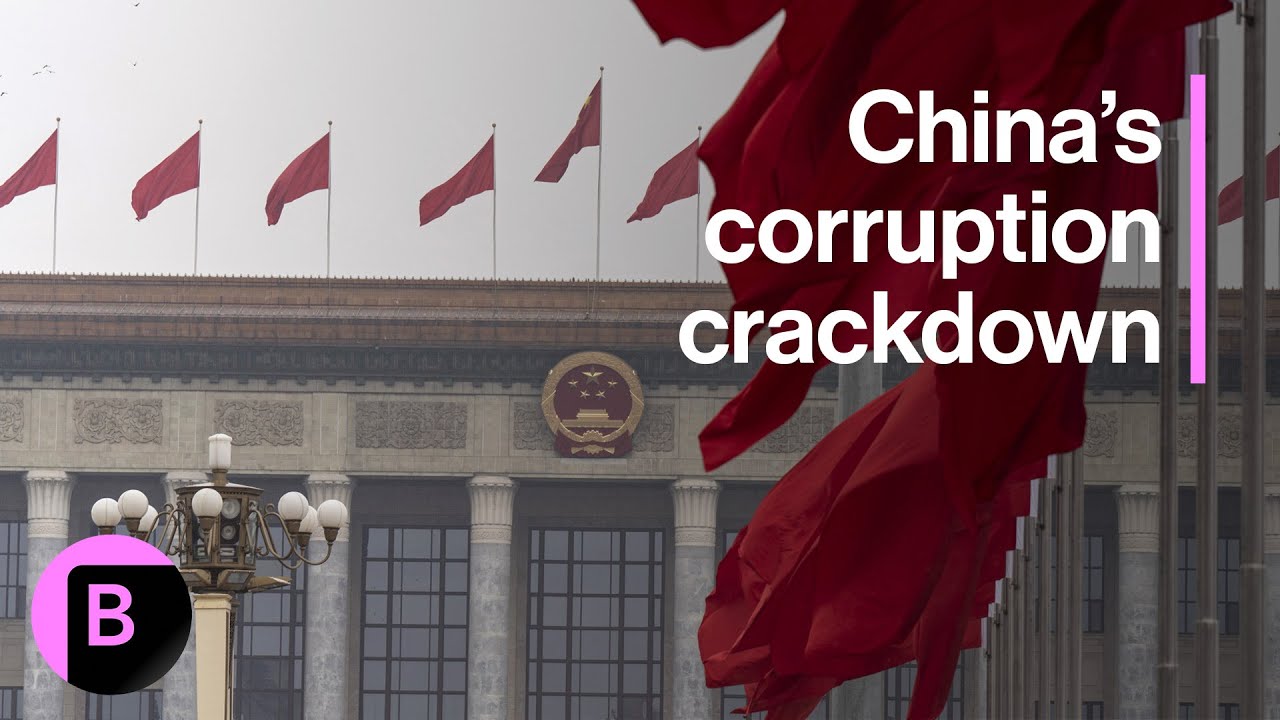
China’s anti-corruption conference emphasized intensified efforts in finance and energy sectors, aiming for comprehensive measures and accountability to restore public trust and foster a more equitable business environment.
China’s Anti-Corruption Initiative
China recently concluded a three-day anti-corruption conference, emphasizing its commitment to combat corruption across various sectors. The government underscored the importance of implementing comprehensive measures and ensuring accountability to safeguard integrity. This initiative addresses ongoing concerns regarding the detrimental effects of corruption on governance and public trust, aiming to promote transparency throughout the nation.
Targeting Key Sectors
In particular, China is intensifying its anti-corruption efforts within the finance and energy sectors, aligning with President Xi Jinping’s initiative for enhanced integrity. By concentrating on these areas, the government seeks to eliminate corrupt practices that threaten economic stability and undermine public confidence. Increased scrutiny in the financial sector has led to tougher regulations and high-profile dismissals of corrupt officials.
Commitment to Reform
China’s firm stance against corruption represents its dedication to fostering a fair business environment. As reforms unfold in critical sectors, the government aims to stimulate sustainable growth and restore public trust in its institutions. This approach marks a significant shift toward accountability in one of the world’s largest economies.
Source : China Targets Finance and Energy Sectors in Anti-Corruption Campaign – Thailand Business News









